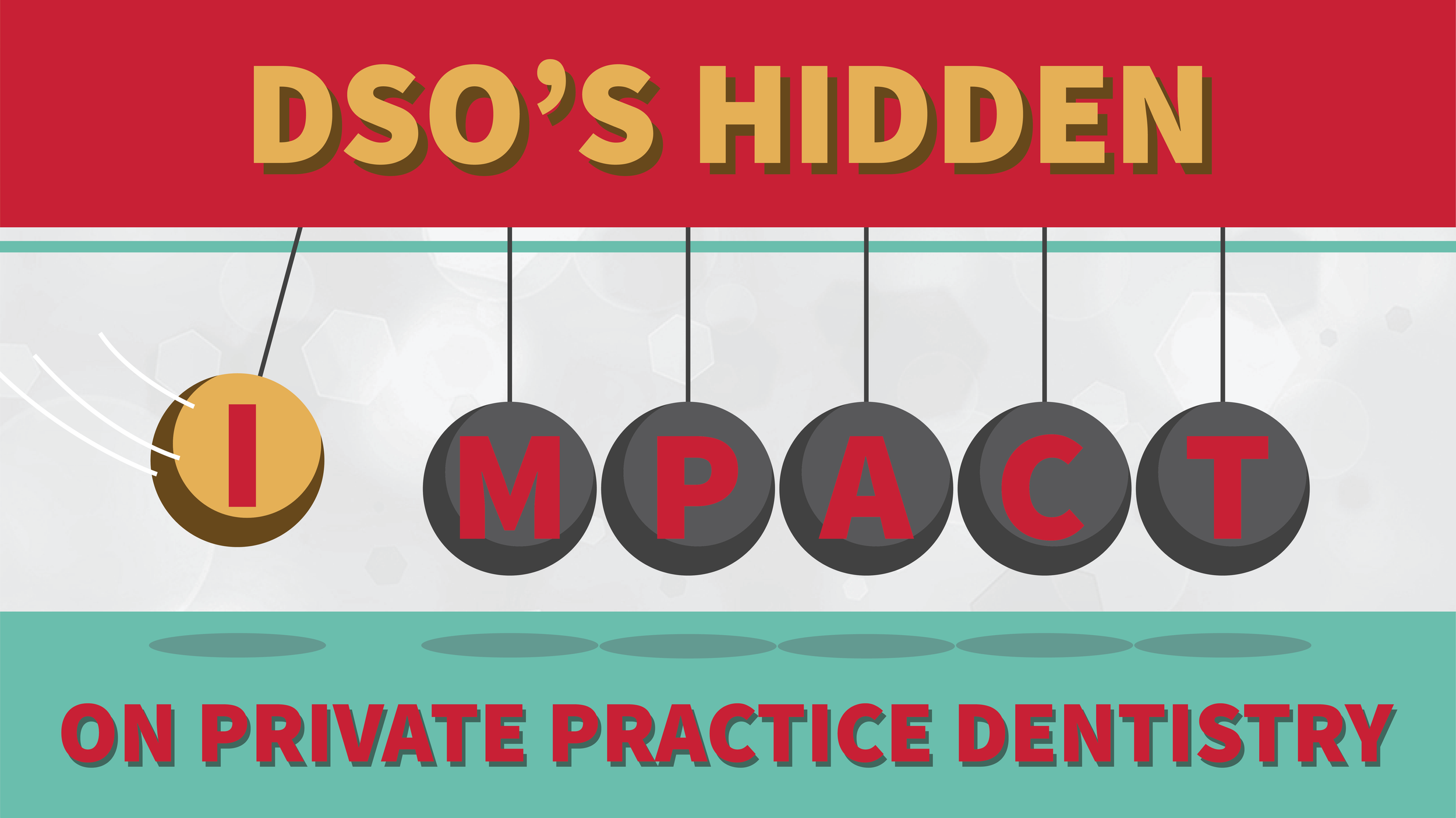DSO’s Hidden Impact on Private Practice Dentistry
When it comes to DSOs (Dental Service Organizations) and corporate ownership in dentistry, the impact on private practices runs much deeper than most realize.
Many practice owners acknowledge the economic advantages that DSOs enjoy, including bulk supply discounts, stronger marketing infrastructure, and leverage with insurance reimbursements. But beneath those advantages lies a more subtle and far more disruptive force quietly reshaping the financial health and value of private dental practices.
Staffing Challenges
For most private practices, staffing represents the single largest expense. In recent years, those costs have surged and the biggest driver has been DSOs aggressively recruiting away hygienists, front desk personnel, EFDAs, and dental assistants with higher pay and benefits. According to the U.S. Bureau of Labor Statistics, the median annual salary for hygienists reached $94,260 as of May 2024, and continues to rise.
When team members are lured away, private practice owners face a difficult decision. Owners must either increase pay to compete or accept a smaller team and reduced productivity. Some Ohio dentists, for instance, now pay $48 per hour or more to keep key EFDAs, while others are taking their chances by capping rates under $40.
A Two-Edged Sword
Raising wages can preserve stability but squeeze profit margins. Holding firm on pay, however, risks high turnover and understaffing. Neither path is ideal, and both can diminish the long-term value of the practice. The tipping point differs by owner. A hygienist vacancy or missing EFDA can translate directly to fewer patients seen, lower collections, and a noticeable dip in annual revenue.
To make matters worse, some hygiene schools now encourage graduates to work through temp agencies rather than accept full-time positions. Temporary hygienist ads in Ohio advertise pay rates as high as $75 per hour or more. As a result, many private practices are caught in an expensive and unpredictable staffing cycle.
The Hidden Impact on Practice Value
The financial effects of staffing instability can easily reach six figures annually, whether through increased payroll or lost production. But the true hidden impact is on practice value. When labor costs rise and collections decline, buyers notice. A short-staffed or underperforming practice is often worth substantially less and, in some cases, becomes unsellable.
What Practice Owners Can Do
If retirement or a transition is on your horizon, the time to act is now. A strong, stable team is one of the most important factors buyers look for when evaluating a practice. Taking steps today to fill key positions or to stabilize wages in a sustainable way can dramatically protect your equity and ensure a smoother sale process later on.
For a free and confidential conversation about your practice’s options and the best path forward, contact our office today. The market is changing quickly, but with the right guidance, you can stay ahead of the curve, and preserve the value you’ve worked a lifetime to build.
Take control of your future
PVA℠ helps practice owners prepare for the inevitable transition of their practices to new ownership.
J. Robert “Bob” Brooks, CEPA, CBI
J. Robert “Bob” Brooks, CEPA, CBI, leads Practice Endeavors, an Ohio-based practice brokerage and dental realty company. His company provides practice owners with the tools they need to prepare well for life after practice ownership and to find the best price/best fit buyers for their seller clients. Bob was integral in starting the first of its kind dental practice broker credentialing for the International Business Brokers Association.



